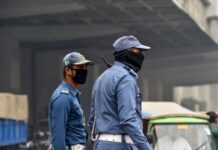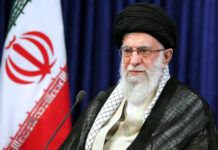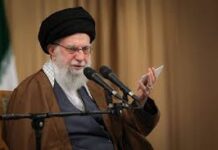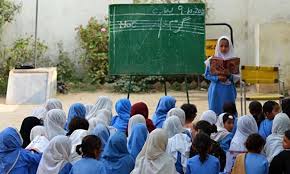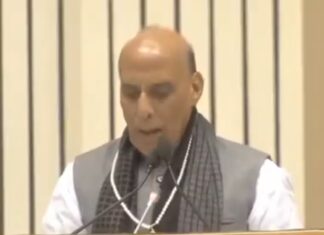Former Prime Minister Imran Khan’s introduction of the Single National Curriculum (SNC) in 2021 was considered to have marked a milestone in Pakistan’s educational landscape. With the aim of standardizing educational practices and enhancing the quality of education across the country, the SNC was designed to be implemented in three phases starting from Grades 1-5 in 2021-22, Grades 6-8 in 2022-23, and Grades 9-12 in 2023-24. However, the implementation of this curriculum has exposed a myriad of challenges, particularly in provinces like Balochistan, where the cultural, linguistic, and economic landscapes differ significantly from the national average. Therefore, it is useful to examine the implications of implementing SNC without equipping the staff for effective outcomes.
Balochistan, known for its rich cultural diversity, historical significance, and diverse traditions, stands as evidence of Pakistan’s cultural mosaic. Yet, the SNC’s uniform approach fails to acknowledge the unique characteristics of Balochistan, leading to a disconnect between the curriculum and the region’s educational needs. While the Federal government mandated the adoption of the SNC for Grades 1-5 in all provinces except Sindh, financial constraints forced Sindh and Balochistan to adopt it in 2022. This delay in implementation highlighted the disparities in resource allocation and the challenges inherent in aligning a national curriculum with local contexts due to budgetary constraints.
The educational landscape of Balochistan reflects a complex web of socio-economic challenges, perpetuating educational disparities and obstructing the region’s development. The disparity between high-end English medium private schools, low-fee private and public schools, and religious Madrassas exacerbates existing class differences, widening the gap between privileged and marginalized communities. Despite government initiatives to increase enrollment through incentives such as fee waivers, stipends, and free books, approximately 22.5 million children remain out of school, stressing the urgent need for targeted interventions to address educational inequities.
While the introduction of the SNC represents a commendable effort to standardize educational practices and enhance the quality of education, its implementation in Balochistan has raised significant concerns. One fundamental challenge posed by the SNC is its failure to account for the cultural diversity of Balochistan. The cultural landscape of Balochistan is characterized by its linguistic diversity, with multiple languages spoken across the region. However, the SNC’s one-size-fits-all approach disregards specific linguistic needs of the province, perpetuating educational inequality and limiting upward social mobility. The curriculum’s emphasis on English as the primary language of instruction for grades 1 to 3, particularly in teaching subjects such as Mathematics and Science, has raised concerns about accessibility and comprehension for students accustomed to local languages and teachers’ unpreparedness towards the curriculum. The disconnect between the curriculum and the linguistic preferences in the province creates barriers for students to effective learning, blocking their academic progress and limiting their future opportunities.
In addition to linguistic barriers, the SNC’s implementation has highlighted the challenges inherent in adapting a uniform curriculum to meet the diverse needs of students. The curriculum’s focus on traditional subjects such as Islamiat and Social Studies, taught in English, poses significant challenges for students accustomed to the instruction in Urdu. The lack of resources and trained educators further compounds these challenges, exacerbating educational disparities and hindering the academic achievement of students.
Moreover, the decision to shift from Urdu to English as the medium of instruction of the curriculum in Balochistan directly impacts students, particularly those facing economic constraints that limit their access to resources and support. This transition exacerbates existing inequalities by imposing additional barriers to learning for students who cannot even afford uniforms or textbooks, thereby further marginalizing economically disadvantaged individuals.
On the other hand, educators are surrounded by limited financial and technical resources, this situation further obstructs their capacity to effectively equip students with the essential skills for future employment opportunities. Furthermore, teachers in government schools frequently lack proficiency in English, as a result, students with comparatively better backgrounds are forced to take supplementary education from English academies, while those from economically disadvantaged backgrounds are left without such opportunities. Consequently, the discrepancy between the curriculum and Balochistan’s economic requirements worsens the region’s unemployment rates, blocking economic growth and perpetuating cycles of poverty and inequality. In contrast, provinces like Punjab have a higher employment-to-population ratio of 44.2 percent, followed by Sindh (42.1 percent), whereas Balochistan stands at 38.6 percent.
A reimagined curriculum, at the forefront of these reforms, becomes the guiding compass for the educational journey of Balochistan. As we embark on this transformative effort, let us envision an educational landscape where every child’s potential is unlocked, where communities actively participate in shaping the future, and where Balochistan’s youth emerge as empowered agents of change. Through educational reforms, we sow the seeds for a brighter and more resilient Balochistan.
Additionally, equipping educators with contextual training programmes will bridge the gap between the national curriculum and the requirements of Balochistan, ensuring that students receive quality education that prepares them for success in the 21st-century workforce. To equip the existing teachers, training programmes are not sufficient for the whole of Balochistan. Therefore, additional training programmes and the inclusion of in-service teachers in technical and vocational education (TVET) would be helpful. Particularly, focusing on the local context will bridge the gap between the national curriculum and the needs of Balochistan. Well-prepared educators are the cornerstone of successful curriculum implementation. Balochistan is investing only Rs 605 million Rupees in teacher training programmes – where educational reforms should ensure that educators are equipped with the pedagogical tools to deliver an engaging and impactful curriculum.
Addressing these challenges requires a series of comprehensive reforms of educational policies. Although the curriculum is good enough to counter inequalities, equipping teachers for better communication delivery of the lesson is essential. Inclusive policies, community involvement, and culturally relevant content are essential for creating a curriculum that resonates with the region.
Furthermore, integrating practical professional and personal development skills and vocational training into the curriculum will empower students with the tools needed for employment and entrepreneurship, fostering economic self-sufficiency and community development. Introducing STEM (science, technology, engineering, and mathematics) education, digital literacy, and critical thinking skills into the curriculum will equip students with the tools needed to thrive in a rapidly evolving global landscape, fostering a generation of innovators and problem solvers.
But before introducing STEM and digital literacy, the availability of uninterrupted internet, mobile networks and computer hardware is also required in which Balochistan is lagging behind all other provinces. Embracing technology and modern educational methodologies will enhance learning experiences, making education more accessible and engaging for students.
In conclusion, as Balochistan strives for progress and development, the reform of the national curriculum in Balochistan emerges as a critical priority. The creation of an inclusive, culturally sensitive, and contextually relevant curriculum is not just an educational necessity but a fundamental step towards building a cohesive and thriving society.
It is time to listen to the voices of Balochistan, appreciate its rich heritage, and pave the way for a brighter future through an education system that truly understands and reflects the needs of its people. Educational reforms in Balochistan must be holistic, addressing not only the content but also the methodologies, infrastructure, and community engagement that shape the educational experience.
A reimagined curriculum, at the forefront of these reforms, becomes the guiding compass for the educational journey of Balochistan. As we embark on this transformative effort, let us envision an educational landscape where every child’s potential is unlocked, where communities actively participate in shaping the future, and where Balochistan’s youth emerge as empowered agents of change. Through educational reforms, we sow the seeds for a brighter and more resilient Balochistan.





